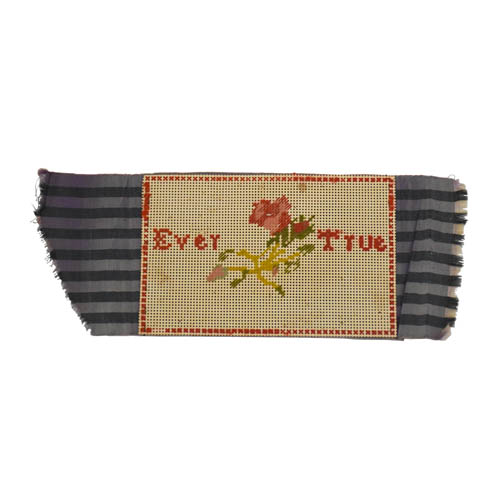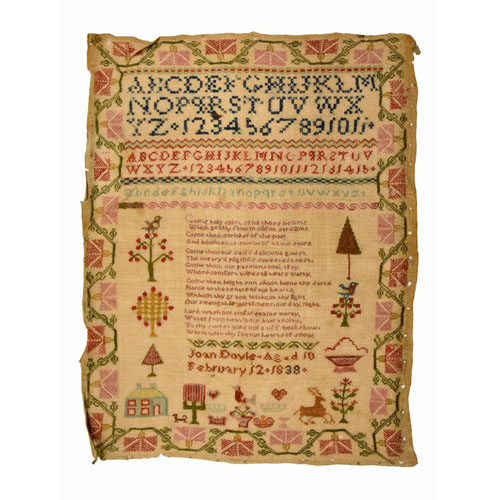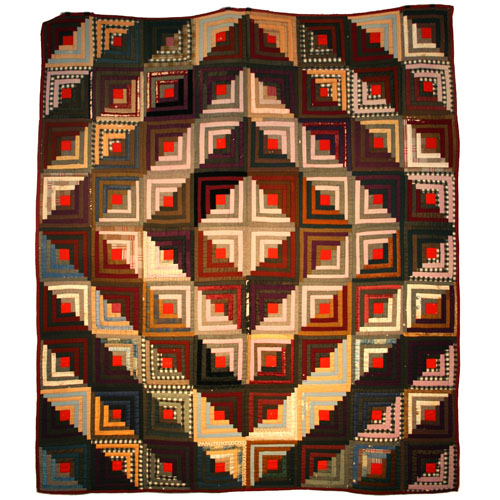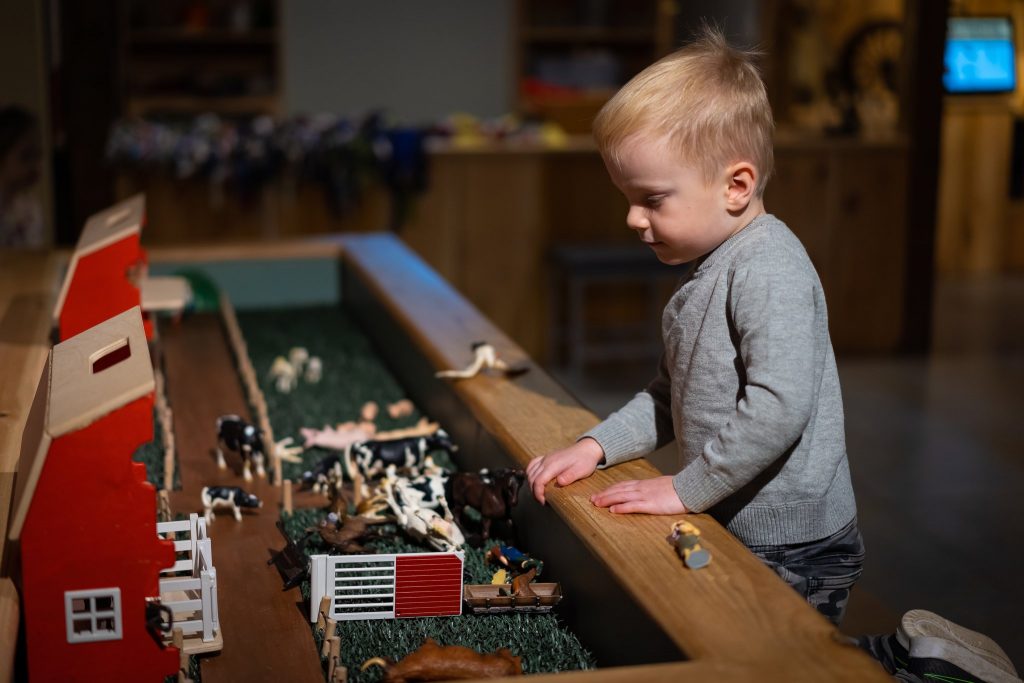Samplers as we know them today are steeped in hundreds of years of tradition, and as such contain history and social meaning with every stitch. Traditional samplers are done using a linen or canvas ground with cross-stitches and/or tent stitches, of a fine thickness wool yarn. By the mid-1800s, with the increase in mechanization for textile manufacturing, along with commercial dyes, ladies were not always not required to spend time making textiles and clothing for their families and turned their needlework talents, still considered a feminine virtue, to the decorative arts. Within the Museum’s collection are several different styles of needlework, with samplers being the most in number. Samplers fall within two broad categories or types: marking samplers, and perforated paper/punched paper.
Marking Samplers
Marking samplers have been made for centuries and were most often made by young girls. These samplers are usually on a linen background and feature rows of letters and numbers, trees, flowers, the maker’s name and date, and occasionally a Biblical verse. Marking samplers functioned as educational tools. Women were expected to be able to mark their household linens with their initials as well as number each linen. Samplers of this type taught young girls not only how to stitch but were also lessons in literacy, numeracy, and if a Biblical verse was present, their catechism. Some of the samplers within the Museum’s collection have part of a marking sampler, usually the alphabet along the top of the piece, while the main body of the piece is a Biblical verse or poem.
Perforated Paper
Perforated Paper or punch paper samplers gain popularity through the second half of the nineteenth century. These samplers were created on a paper background, with die punched holes throughout. Perforated paper came with a variety of different sized holes per square inch, allowing the maker control over which types/sizes of material used to create the image; the holes regulated the stitches. Gaining popularity by the 1850s, were perforated paper bookmarks and the Museum’s online collection has several different examples. By the 1870s perforated paper also came pre-stamped with a pattern, much like a paint-by-number today, with mottoes being the most popular. Different coloured paper was available for different coloured backgrounds, rather than the standard off-white and it was a common practice to place foil behind the piece when framed, giving it a reflective sheen.







